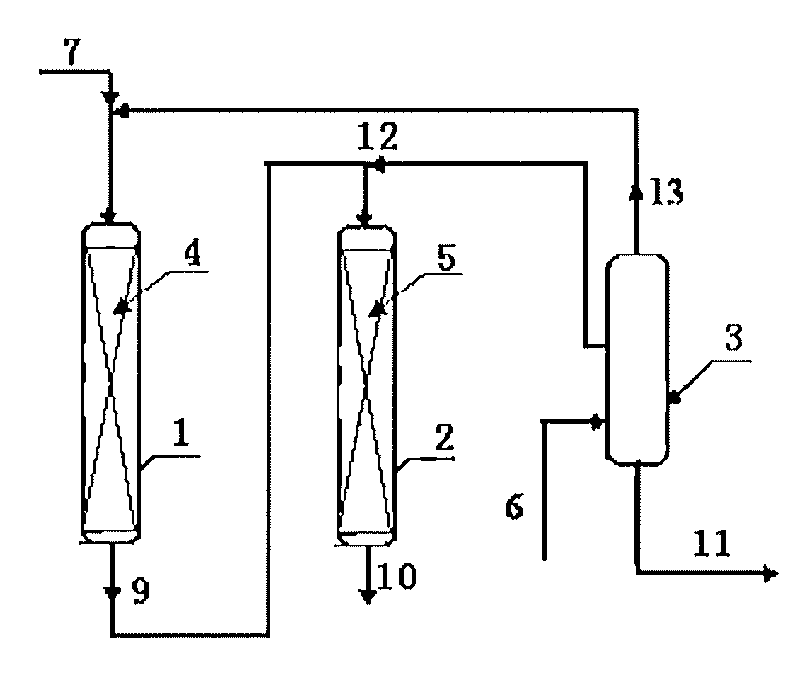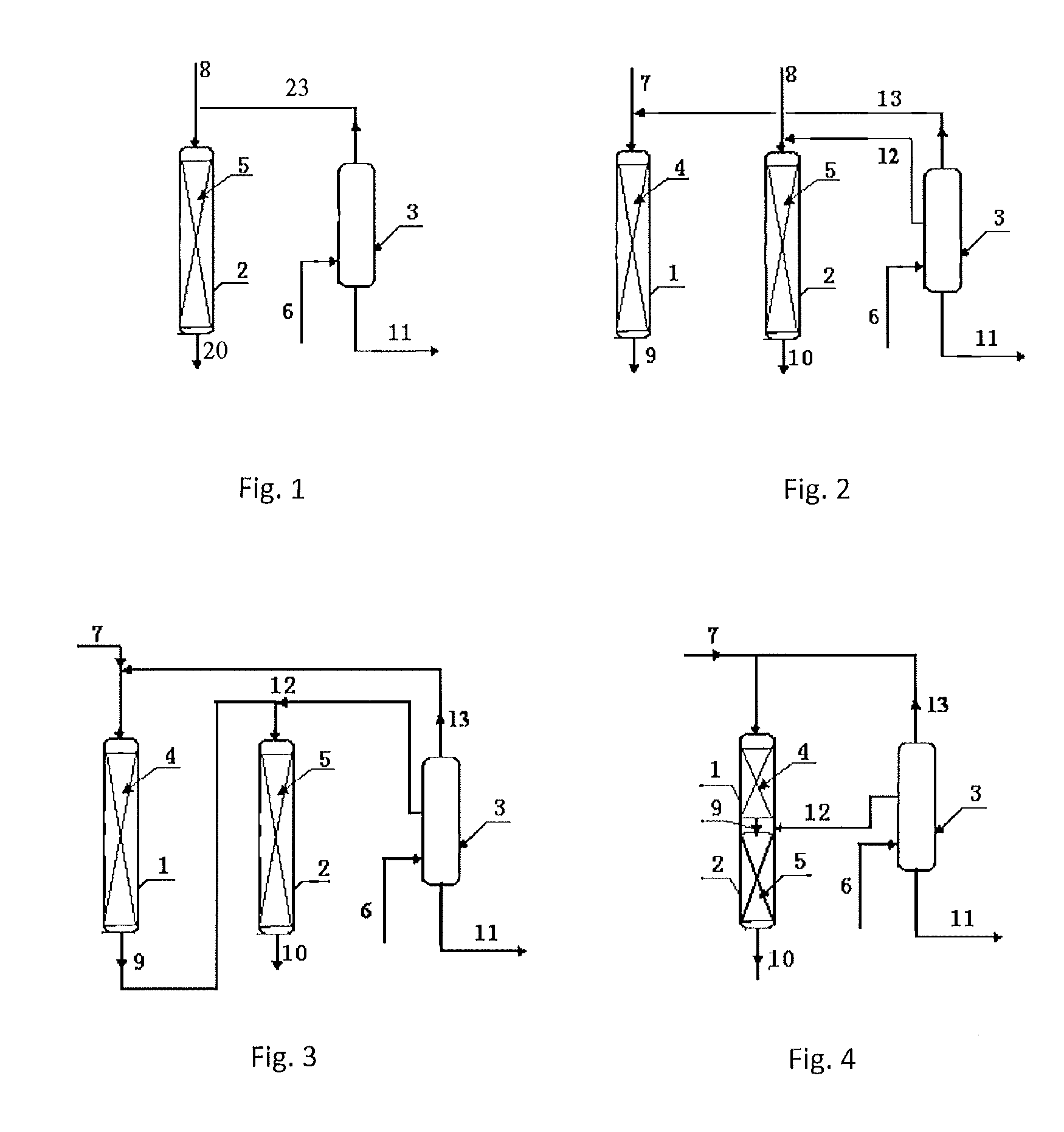Process for producing cumene
a technology of isopropyl benzene and cumene, which is applied in the direction of hydrocarbon by metathesis reaction, hydrocarbon preparation catalysts, organic chemistry, etc., can solve the problems of serious pollution and corrosion of the devices, reduce the quality of the product isopropyl benzene, and still relatively low yield of isopropyl benzene of the alcl/sub>process and other problems, to achieve the effect of significantly reducing the conten
- Summary
- Abstract
- Description
- Claims
- Application Information
AI Technical Summary
Benefits of technology
Problems solved by technology
Method used
Image
Examples
example
Example 1
[0033]According to the procedures of FIG. 2, the first transalkylation reactor was loaded with 20 g of a catalyst of Beta zeolite, and the second transalkylation reactor was loaded with 50 g of a catalyst of MCM-22 zeolite. The reaction conditions of the first transalkylation reactor comprised: a reaction temperature of 150 degrees C., a reaction pressure of 1.2 MPa, a flow rate of the first benzene stream (stream 7) of 40 g / hr, a feeding rate of the polyisopropyl benzene (stream 13) of 20 g / hr, and a content of diisopropylbenzene in stream 13 of 98%. The reaction conditions of the second transalkylation reactor comprised: a reaction temperature of 180 degrees C., a reaction pressure of 1.5 MPa, a flow rate of the second benzene stream (stream 8) of 80 g / hr, a flow rate of the polyisopropyl benzene (stream 12) of 80 g / hr, and a content of tri-isopropylbenzene in stream 12 of 10%. The reaction was carried out continuously for 5 days.
[0034]The operation conditions of the poly...
example 2
[0036]According to the procedures of FIG. 2, the first transalkylation reactor was loaded with 30 g of a catalyst of Beta zeolite, and the second transalkylation reactor was loaded with 40 g of a catalyst of MCM-22 zeolite. The reaction conditions of the first transalkylation reactor comprised: a reaction temperature of 143 degrees C., a reaction pressure of 1.2 MPa, a flow rate of the first benzene stream (stream 7) of 60 g / hr, a feeding rate of the polyisopropyl benzene (stream 13) of 20 g / hr, and a content of diisopropylbenzene in stream 13 of 99%. The reaction conditions of the second transalkylation reactor comprised: a reaction temperature of 175 degrees C., a reaction pressure of 1.5 MPa, a flow rate of the second benzene stream (stream 8) of 60 g / hr, a flow rate of the polyisopropyl benzene (stream 12) of 40 g / hr, and a content of tri-isopropylbenzene in stream 12 of 8%. The reaction was carried out continuously for 5 days.
[0037]The operation conditions of the polyisopropyl ...
example 3
[0039]According to the procedures of FIG. 2, the first transalkylation reactor was loaded with 50 g of a catalyst of Beta zeolite, and the second transalkylation reactor was loaded with 40 g of a catalyst of SHY-1 zeolite. The reaction conditions of the first transalkylation reactor comprised: a reaction temperature of 150 degrees C., a reaction pressure of 1.2 MPa, a flow rate of the first benzene stream (stream 7) of 100 g / hr, a feeding rate of the polyisopropyl benzene (stream 13) of 60 g / hr, and a content of diisopropylbenzene in stream 13 of 98%. The reaction conditions of the second transalkylation reactor comprised: a reaction temperature of 180 degrees C., a reaction pressure of 1.5 MPa, a flow rate of the second benzene stream (stream 8) of 80 g / hr, a flow rate of the polyisopropyl benzene (stream 12) of 80 g / hr, and a content of tri-isopropylbenzene in stream 12 of 5%. The reaction was carried out continuously for 5 days.
[0040]The operation conditions of the polyisopropyl ...
PUM
| Property | Measurement | Unit |
|---|---|---|
| wt % | aaaaa | aaaaa |
| wt % | aaaaa | aaaaa |
| weight ratio | aaaaa | aaaaa |
Abstract
Description
Claims
Application Information
 Login to View More
Login to View More - R&D
- Intellectual Property
- Life Sciences
- Materials
- Tech Scout
- Unparalleled Data Quality
- Higher Quality Content
- 60% Fewer Hallucinations
Browse by: Latest US Patents, China's latest patents, Technical Efficacy Thesaurus, Application Domain, Technology Topic, Popular Technical Reports.
© 2025 PatSnap. All rights reserved.Legal|Privacy policy|Modern Slavery Act Transparency Statement|Sitemap|About US| Contact US: help@patsnap.com


